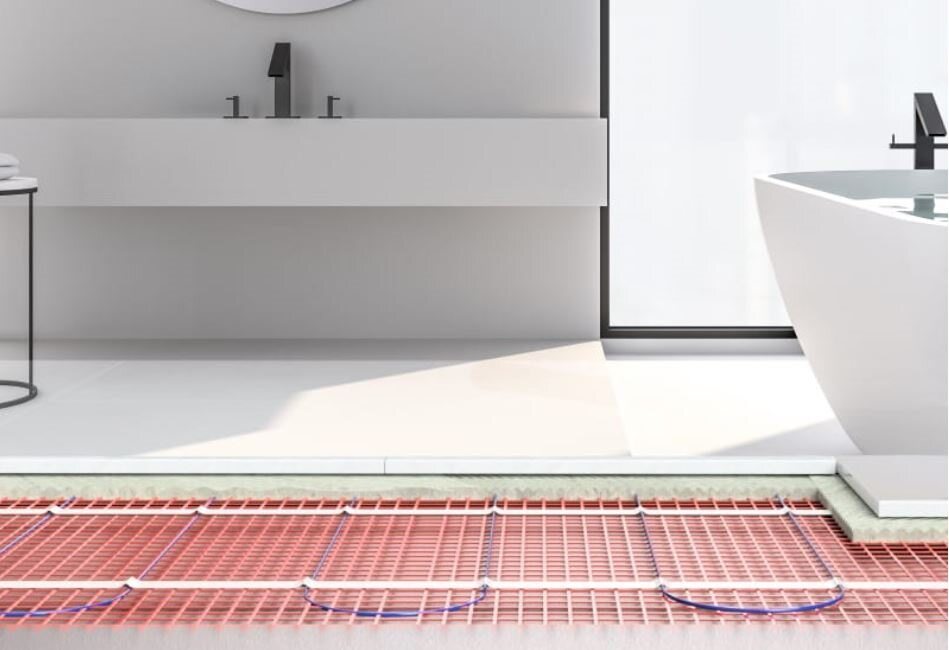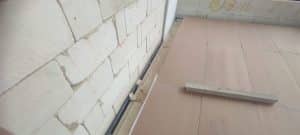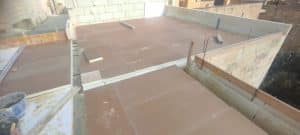When it comes to installing a reliable and long-lasting underfloor heating system under tiles, the adhesive you choose can make or break your project—literally. In Malta’s unique climate, where humid coastal conditions meet traditional stone and tile interiors, knowing the exact underfloor heating tile adhesive requirements is crucial. Get it wrong, and you risk cracked tiles, uneven heating, or even system failure. Get it right, and you’ll enjoy years of consistent warmth and comfort.
In this guide, we’ll walk you through the 7 key requirements for the perfect tile adhesive when working with underfloor heating in Malta. We’ll explain what to look for, why it matters, and how to avoid costly mistakes—while keeping things practical, not overly technical.
And remember: if you’d rather have professionals handle it, you can contact us today and we’ll help you choose the right adhesive and install your system for maximum performance: Contact Us.
1. Why Adhesive Choice Matters for Underfloor Heating| Underfloor Heating Tile Adhesive Requirements
Many people think that as long as they use a “good” tile adhesive, they’re fine. But for underfloor heating, the tile adhesive must meet very specific requirements.
Unlike standard flooring, underfloor heating systems cause continuous cycles of heating and cooling. This means the adhesive needs to:
Expand and contract without cracking
Bond well to both tiles and heating mats/pipes
Handle moisture without deteriorating
If you use the wrong adhesive—one not designed for thermal movement—your tiles may loosen over time, grout can crack, and heat transfer efficiency drops.
That’s why understanding underfloor heating tile adhesive requirements is not just a suggestion—it’s essential to protect your investment.
2. Requirement #1 – Flexibility Is Non-Negotiable| Underfloor Heating Tile Adhesive Requirements
The number one underfloor heating tile adhesive requirement is flexibility. In technical terms, you should use an S1 or S2 classified adhesive according to EN 12004 standards.
Why flexibility?
When your heating system turns on, the substrate and tiles expand slightly. When it cools, they contract. A standard rigid adhesive cannot handle this thermal movement—it will crack under stress. Flexible adhesives absorb the movement, keeping everything intact.
Pro Tip for Malta: Given Malta’s climate (warm ambient temperatures but occasional high humidity), using an S2 adhesive gives you the extra margin of flexibility to handle seasonal changes and prevent microcracks.
3. Requirement #2 – Heat Resistance for Long-Term Durability| Underfloor Heating Tile Adhesive Requirements
Not all adhesives are designed to work in high temperatures. Your chosen product must be heat resistant up to at least 70°C, though most underfloor heating systems for tiles operate between 25–30°C.
Without heat resistance, adhesives can soften or lose bond strength over time, causing tiles to shift. A proper underfloor heating adhesive will maintain its performance even after thousands of heating cycles.
Example: A premium polymer-modified thin-set adhesive often ticks this box, providing both flexibility and heat stability.
4. Requirement #3 – Moisture Tolerance for Malta’s Coastal Homes| Underfloor Heating Tile Adhesive Requirements
Another overlooked underfloor heating tile adhesive requirement is moisture tolerance. In older Maltese houses or coastal properties, humidity levels can be high, especially in bathrooms, kitchens, or basements.
Moisture can creep under tiles if not properly sealed, leading to adhesive breakdown and mold growth. That’s why you should choose an adhesive with excellent water resistance—often labelled as “suitable for wet areas.”
Pairing a moisture-resistant adhesive with proper waterproofing membranes will protect your installation for decades.
5. Requirement #4 – Rapid Setting for Faster Installations| Underfloor Heating Tile Adhesive Requirements
While not strictly mandatory, a rapid-setting adhesive is highly recommended for underfloor heating projects.
Benefits include:
Reduced waiting time before grouting or walking on tiles
Less downtime in busy households or commercial properties
Lower risk of tiles moving before the adhesive cures
In Malta, where renovations often need to be completed quickly (especially in rental properties or holiday homes), rapid-setting adhesives can be a game changer.
6. Requirement #5 – Excellent Bond Strength for Heavy Tiles| Underfloor Heating Tile Adhesive Requirements
Many Maltese homes use porcelain, marble, or natural stone tiles. These materials are heavy, meaning your adhesive needs high bond strength to keep them securely attached over heated subfloors.
Look for adhesives with a minimum bond strength of 1 N/mm² after heat aging, as per EN standards. This ensures the tiles stay in place even under the constant thermal expansion and contraction cycles.
7. Requirement #6 – Compatibility With Tile Size and Thickness| Underfloor Heating Tile Adhesive Requirements
This is a critical underfloor heating tile adhesive requirement that many DIY installers miss. Large-format tiles (e.g., 60×60 cm or more) require an adhesive that can spread evenly and fill any voids beneath the tile.
Voids reduce heat transfer and can lead to tile cracking. For larger tiles, you may need:
Full coverage bonding techniques (back-buttering)
High-performance thin-set adhesives designed for large formats
In Malta, large ceramic or porcelain tiles are popular for their sleek look, so make sure your adhesive is up to the task.
8. Requirement #7 – Compliance With European Standards| Underfloor Heating Tile Adhesive Requirements
Finally, never skip checking that your adhesive meets EU regulations and EN 12004 classification. This is your guarantee that the product has been tested for:
Bond strength
Thermal movement tolerance
Heat resistance
Water resistance
Buying from a reputable supplier also ensures you’re not getting a cheap counterfeit product. Remember: saving €20 on adhesive now could cost you thousands in repairs later.
Common Mistakes to Avoid When Choosing Tile Adhesive for Underfloor Heating| Underfloor Heating Tile Adhesive Requirements
Even if you know the underfloor heating tile adhesive requirements, there are pitfalls you should avoid:
Using leftover adhesive from another job – It may not have the right properties.
Skipping flexibility – Rigid adhesives will fail over time.
Choosing bargain products – Cheap adhesives may not be heat resistant.
Ignoring tile type – Heavy natural stone needs stronger bonding.
Neglecting substrate preparation – Even the best adhesive won’t stick to a dusty or uneven surface.
How Much Does the Right Tile Adhesive Cost in Malta?| Underfloor Heating Tile Adhesive Requirements
In Malta, a high-quality flexible, heat-resistant tile adhesive suitable for underfloor heating typically costs €25–€45 per 20kg bag.
For an average bathroom of 10m²:
You might need 2–3 bags (€50–€135 total).
This cost is minimal compared to replacing cracked tiles or redoing an entire underfloor heating installation.
If you’re hiring professionals, expect the adhesive to be included in the overall installation price—often starting at €800–€1,500 depending on the room size and heating system type.
Professional vs DIY Adhesive Application| Underfloor Heating Tile Adhesive Requirements
While it’s possible to buy the correct adhesive and install it yourself, underfloor heating systems require precision. Professional installers:
Know exactly how to prepare the substrate
Choose the right adhesive type for your tiles and heating system
Ensure full coverage to maximise heat transfer
Follow manufacturer guidelines for curing times and heating system start-up
If you’d rather avoid the risk, our team can handle everything—from selecting the perfect adhesive to installing your heating system for peak performance. Get in touch here: Contact Us.
Malta-Specific Considerations for Adhesive Selection| Underfloor Heating Tile Adhesive Requirements
Installing underfloor heating in Malta has unique challenges:
Humidity: Coastal areas like Sliema or Marsascala require moisture-resistant solutions.
Old homes: Traditional Maltese houses often have uneven floors that need levelling before adhesive application.
Tile preferences: Ceramic and porcelain dominate, but marble is also common—each needing specific adhesive strengths.
By following the underfloor heating tile adhesive requirements in this guide, you’ll ensure your installation can withstand Malta’s climate and architectural quirks.
Step-by-Step Guide to Applying Tile Adhesive for Underfloor Heating| Underfloor Heating Tile Adhesive Requirements
Knowing the underfloor heating tile adhesive requirements is the first step. The second step is applying it correctly. A perfect adhesive can still fail if installation isn’t done right.
Here’s a step-by-step approach our team uses in Malta to ensure long-lasting, efficient heating:
1. Prepare the Substrate
Before adhesive even touches the floor:
Make sure the subfloor is clean, dry, and level.
Remove dust, grease, or old adhesive residues.
For older Maltese stone floors, apply a primer to improve adhesion.
2. Install the Heating System
Lay down your electric heating mats or water-based pipes according to the manufacturer’s instructions. Ensure they are securely fixed and won’t move when troweling adhesive.
3. Mix the Adhesive Correctly
Follow the manufacturer’s exact water-to-powder ratio. Too much water weakens bond strength; too little makes spreading difficult. Use a mixing paddle for even consistency.
4. Apply Using the Right Trowel
For most underfloor heating tile adhesive applications, a 10mm notched trowel is recommended.
Spread adhesive evenly on the substrate.
For large-format tiles, back-butter the tile as well to ensure 100% coverage.
5. Lay the Tiles
Press tiles firmly into place, sliding slightly to ensure good adhesive contact with both the tile and heating layer.
Check for air gaps (these reduce heat transfer).
Use spacers for consistent grout lines.
6. Allow Proper Curing Time
Do not turn on the heating immediately. Adhesive must cure fully before exposure to heat—usually 7 days for standard adhesives, 3–4 days for rapid-setting options.
7. Start the Heating Gradually
When it’s time to turn on your heating:
Start at a low temperature.
Increase gradually over several days to prevent thermal shock to the adhesive and tiles.
FAQs About Underfloor Heating Tile Adhesive in Malta| Underfloor Heating Tile Adhesive Requirements
Q1: Can I use normal tile adhesive for underfloor heating?
No. Standard adhesives lack the flexibility and heat resistance required for the constant thermal expansion and contraction of underfloor heating.
Q2: Does the adhesive type change for ceramic vs. marble tiles?
Yes. While the underfloor heating tile adhesive requirements are similar, heavier materials like marble require higher bond strength adhesives.
Q3: How soon can I walk on tiles after installation?
With rapid-setting adhesives, you can walk on them in 3–4 hours; standard adhesives may require 24 hours. Always check the product instructions.
Q4: How much extra does flexible adhesive cost compared to normal adhesive?
In Malta, expect to pay €5–€10 more per bag. Given the longevity and protection it offers, it’s a small investment for peace of mind.
Q5: Can I install underfloor heating myself if I use the right adhesive?
It’s possible, but precision is key. A professional ensures both adhesive choice and application meet all requirements, reducing the risk of costly errors.
Why Following the Requirements Saves You Money| Underfloor Heating Tile Adhesive Requirements
It’s tempting to cut corners by using cheaper adhesive or skipping flexibility. But in Malta, we’ve seen projects fail within a year because of poor adhesive choice.
A €30 saving now can become a €1,000+ repair bill later, not to mention the inconvenience of ripping up floors.
When to Call a Professional| Underfloor Heating Tile Adhesive Requirements
If you’re unsure about:
Which adhesive classification is best (S1 vs. S2)
Whether your tiles require extra bond strength
How to handle moisture-prone areas like bathrooms
…it’s time to get expert help. Our team specialises in underfloor heating installations tailored for Malta’s climate and building styles.
📞 Book a consultation here: Contact Us.
Final Checklist: Underfloor Heating Tile Adhesive Requirements
Before starting your project, make sure your adhesive is:
✅ Flexible (S1 or S2 classification)
✅ Heat resistant (min. 70°C)
✅ Moisture tolerant
✅ High bond strength (≥1 N/mm²)
✅ Suitable for your tile size
✅ Compliant with EN 12004 standards
Following these will ensure your heating system performs at its best for decades.
Conclusion
Choosing the right tile adhesive for your underfloor heating is not just about brand preference—it’s about meeting the underfloor heating tile adhesive requirements that will keep your system efficient, your tiles secure, and your home warm.
From flexibility to moisture resistance, every requirement serves a purpose. Skipping any of them risks both your comfort and your wallet.
Check Out Our Service
If you’re ready to transform your home with efficient, comfortable heating, our expert team is here to help. We provide full installation services, from choosing the right adhesive to perfect tile placement.
👉 Explore our service here: Underfloor Heating on Tiles in Malta
Outbound Link for Extra Reading: Learn more about the history and technology behind underfloor heating.




